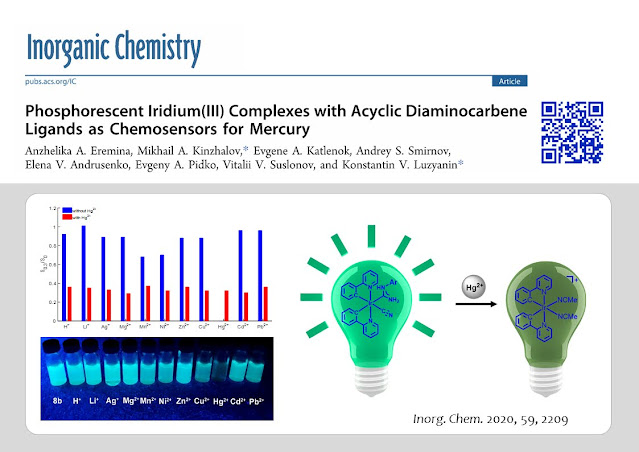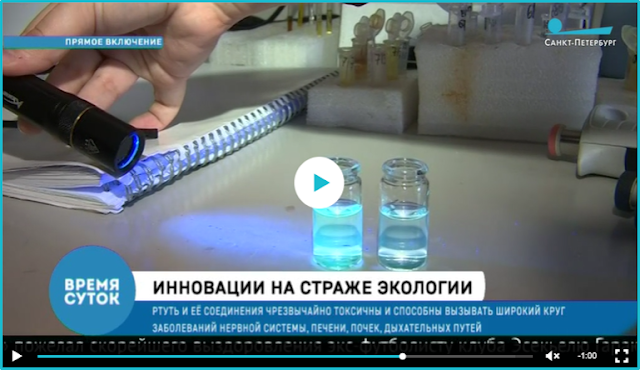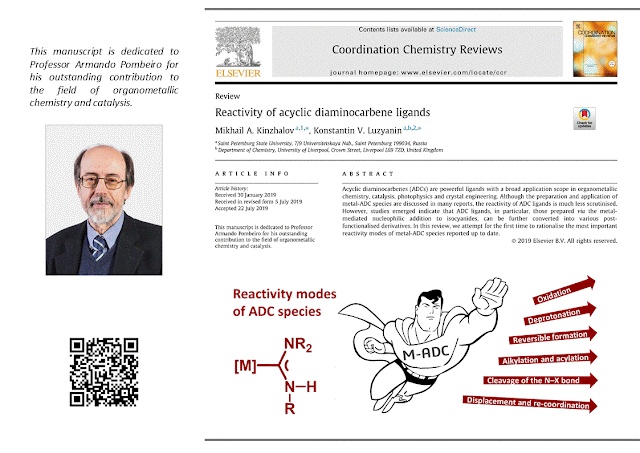Phosphorescent Iridium(III) Complexes with Acyclic Diaminocarbene Ligands
Phosphorescent Iridium(III) Complexes with Acyclic Diaminocarbene Ligands as Chemosensors for Mercury
Full text: Inorg. Chem., 2020, 59, 2209
Video topspb.tv
Video 2 topspb.tv
A new application for bis(cyclometallated)-iridium(III)
species containing ancillary acyclic diaminocarbene ligands, viz. for
sensing of mercury(II) ions, is disclosed. A family of bis(cyclometallated)-iridium(III)
species supported by both parent isocyanide and acyclic diaminocarbene ligands
was prepared, and their electrochemical and photophysical properties were
evaluated, revealing efficient blue-green phosphorescence in solution with
quantum yields of up to 55%. We uncovered that photophysical properties of
these complexes are dramatically altered by the presence of metal ions, and
that the complex [Ir(ppy)2(CN){C(NH2)(NHС6H4-4-X)}]
with ADC ligand reacts selectively with Hg2+ ions, enabling its use for
sensing of mercury(II) ions in solution. The limit of detection was as low as
2.63 × 10−7 M, and additional mechanistic studies
indicated the formation of an unusual dinuclear iridium(III)-cyclometallated
intermediate, bridged by a mercury-(dicyano) fragment as a driving force of
mercury sensing.
 |
Both CNR and ADC complexes exhibit strong
blue-green phosphorescence in MeCN solution, achieving quantum yields of up to
55% for the isocyanide [Ir(ppy)2(CNС6H4-4-Cl)2](OTf)
and up to 45% for the ADC [Ir(ppy)2(CN){C(NH2)(NHС6H4-4-Cl)}]
emitters.
Complexes [Ir(ppy)2(CN){C(NH2)(NHС6H4-4-X)}]
with ADC and cyano ancillary ligands react selectively with Hg2+
ions and this could be used in the efficient sensing of mercury(II) ions in
solution with the limit of detection as low as 2.63 × 10−7
M. A Job’s plot and a titration isotherm plotting PL emission
intensities vs Hg2+ concentration established a
1:2 binding stoichiometry, while additional mechanistic studies supported the
intermediate formation of dinuclear iridium(III)-cyclometallated species linked
by the bridging mercury-(dicyano) fragment as a driving force of mercury
sensing. Our first results open up a new application field for the ADC-metal
complexes, viz. ion sensing, and the future studies in this field are
currently underway in our group.

















